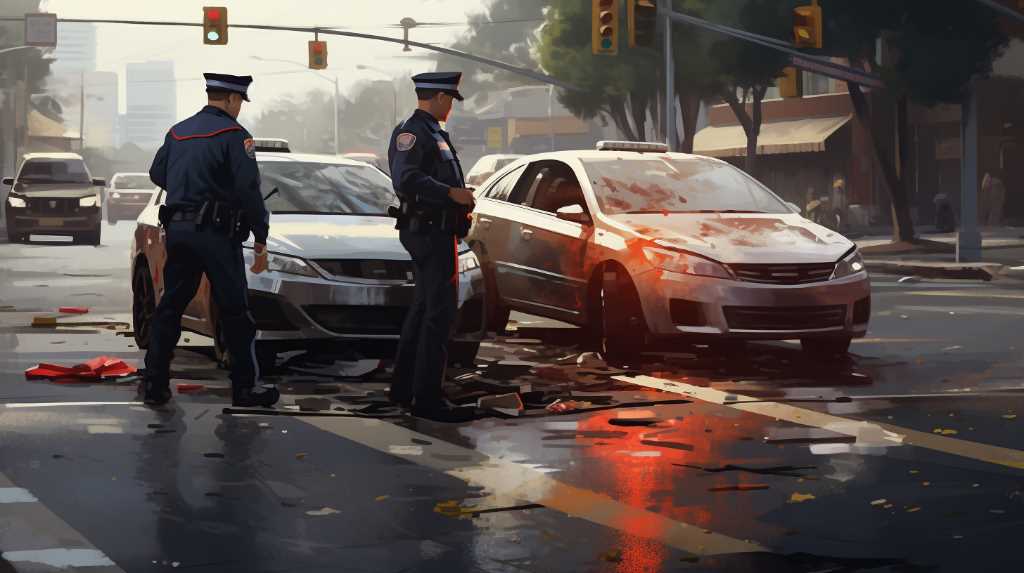
To figure out who is at fault in a car accident, there are several important factors to consider. First, it is crucial to carefully examine the evidence and review the traffic laws relevant to the location of the crash. This step helps establish the legal framework within which the accident occurred.
Next, it is important to assess the damage on the cars involved in the accident. The extent and nature of the damage can provide valuable clues about how the accident unfolded and who may bear responsibility.
Witness statements play a significant role in determining fault as well. Witnesses who saw the accident firsthand can provide additional information and perspectives that help build a more complete picture of what happened.
In addition, police reports are a key source of information. These reports contain the notes and findings of the responding officers, providing an official record of the accident.
Lastly, the availability of videos from dashcams has become increasingly beneficial in determining fault. These videos provide visual evidence that can offer a clear and objective account of the accident, making it easier to establish who caused the collision.
Examine Traffic Laws
To figure out who is at fault in a car crash, we need to look at the traffic rules that were in place when it happened. These rules tell drivers what they should and shouldn’t do, like who has the right to go first, how fast they can drive, and what traffic lights mean. It’s really important to check these rules carefully and compare them with what actually happened during the crash.
This means looking closely at where the crash happened, how the cars were damaged, and what people who saw the crash say. Also, we need to see if anyone broke traffic laws, like if someone sped through a red light or made an illegal turn. By doing this, we can fairly figure out who was following the rules and who wasn’t, and then decide who was responsible for the crash.
Assess Vehicle Damage
Looking at where a car is damaged can tell us a lot about how the crash happened. For example, if one car has damage at the front and another car has damage on the side, it probably means they hit each other at an angle, and maybe one didn’t stop when they should have.
If a car has been hit in the back, it could mean that the car behind it was following too closely or wasn’t paying attention and ran into it.
If a car has damage all over, it might have spun around or flipped over, which might happen if it was going too fast or the driver lost control.
Gather Eyewitness Accounts
After assessing the vehicle damage, collecting statements from eyewitnesses provides critical insights into the sequence of events leading up to the accident. Eyewitness accounts are invaluable as they offer perspectives that are not influenced by the potential biases or self-interest of the drivers involved.
The process of gathering these testimonies requires a methodical approach, ensuring that the information obtained is both accurate and relevant.
Interviewing witnesses promptly helps prevent the decay of memory, which can compromise the reliability of their accounts. Investigators must ask open-ended questions to allow for detailed responses while also cross-referencing statements for consistency. Each account must be meticulously recorded, noting the witness’s location, angle of sight, and any obstructions that could affect their perception.
This rigorous analysis of eyewitness testimony can be pivotal in reconstructing the incident and establishing fault.
Review Police Reports
Reviewing police reports is key when figuring out who is at fault in car crashes. These reports give a clear picture because they include what the officer saw and any tickets given at the scene. You need to look closely at the report for a full story of what happened, details about where the cars were, where they hit each other, and if any traffic laws were broken.
The report might have drawings, what witnesses said, and the officer’s thoughts on the crash based on what they saw and heard. It’s important to check if anyone got a ticket, as this can point to who was at fault. Also, the report might mention the weather or the road conditions, which can affect who is to blame.
Analyze Dashcam Footage
After a car crash, looking at dashcam footage helps figure out who was at fault. This is done by carefully watching the recorded video to see what happened just before the crash. Experts look at every frame of the video to check things like how fast the cars were going, what the roads were like, if there were any traffic lights and what the drivers were doing.
They also make sure the dashcam’s view is clear and from a good angle so that the analysis is accurate. Dashcam videos can catch important details that people who saw the crash might miss or they might show something different from what the people involved in the crash say happened.
This makes dashcams a reliable way to find out who is responsible for car accidents.
Conclusion
To figure out who caused a car crash, you need to look at several things carefully. This includes checking what the traffic laws say, looking at the damage to the cars, listening to what eyewitnesses saw, reading the police report, and watching any dashcam videos if there are any.
By looking at all these details, you can understand the whole situation better. This helps to make sure the right person is held responsible, which is very important for legal reasons and for dealing with insurance. It’s all about finding out the truth based on solid proof.